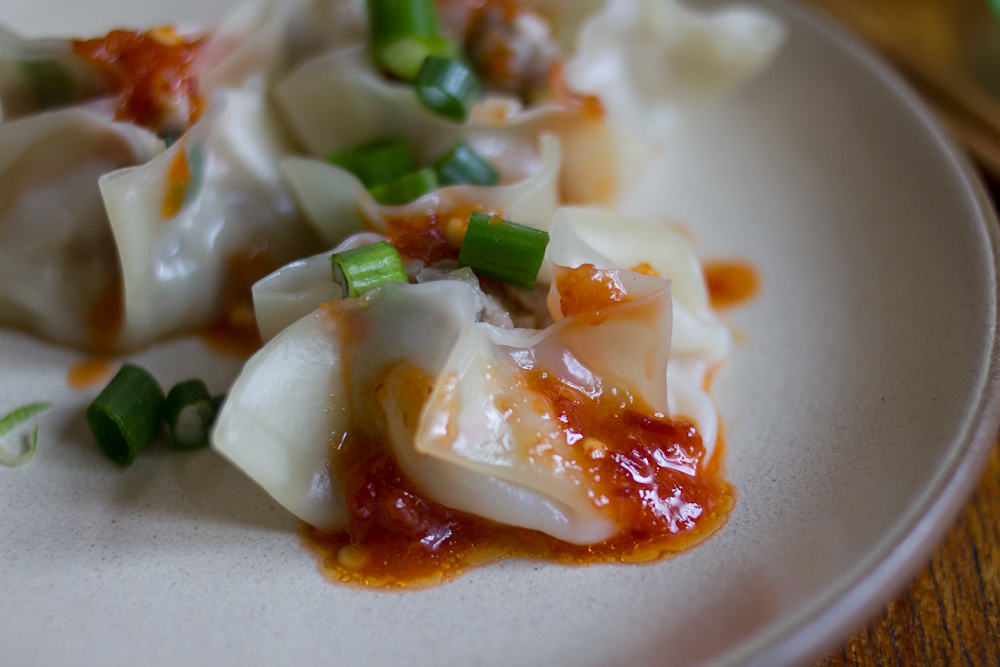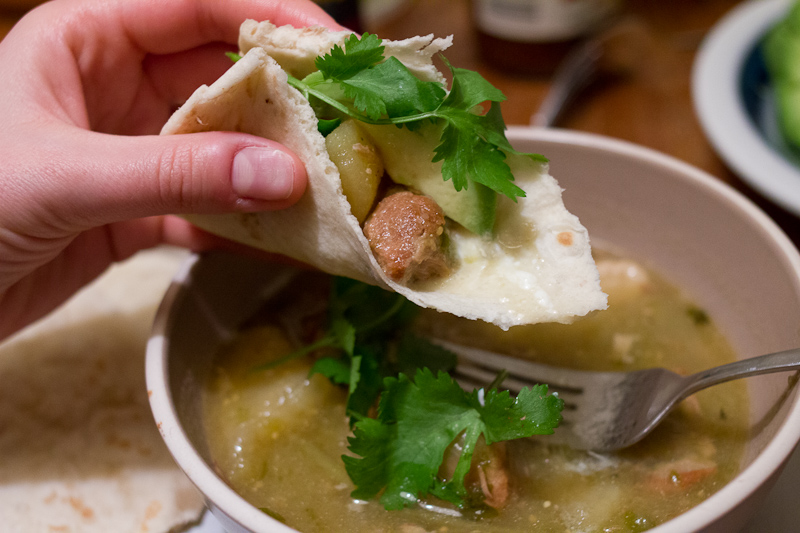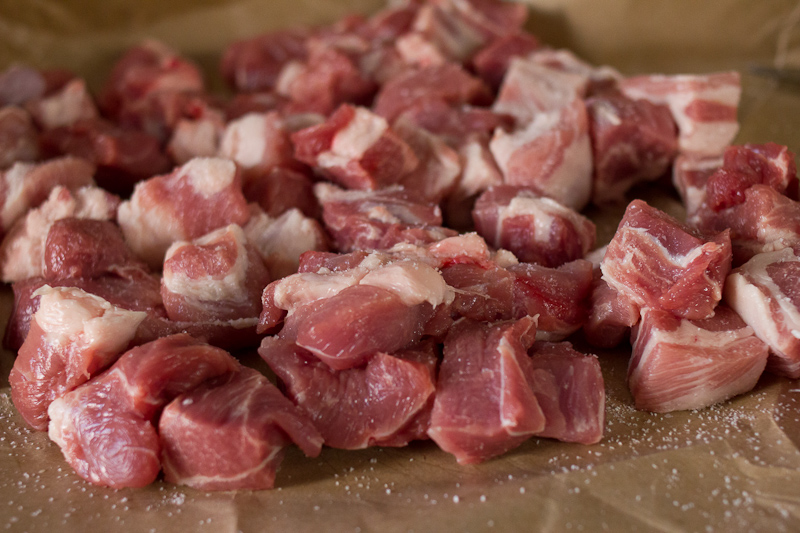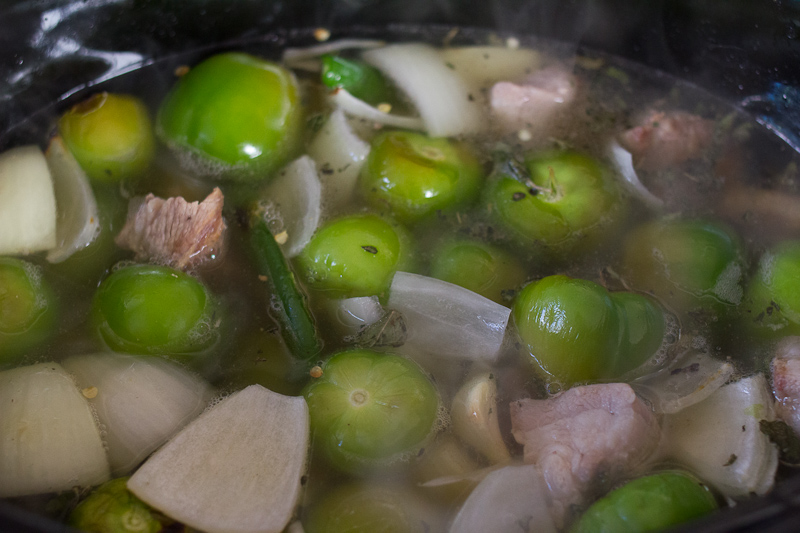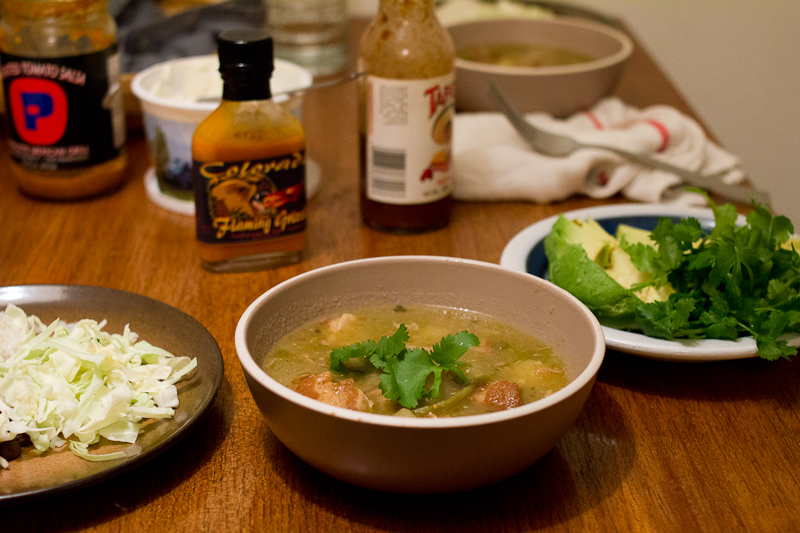We’ve been on a bit of a dumpling kick lately. Eating dumplings at spots all around the city, making our own at home, forcing friends to work for their dinners, being forced by friends to work for ours. We’re affectionately referring to this obsession as the Year of the Dumpling, but based on how things are going, it may evolve into the Decade of the Dumpling.
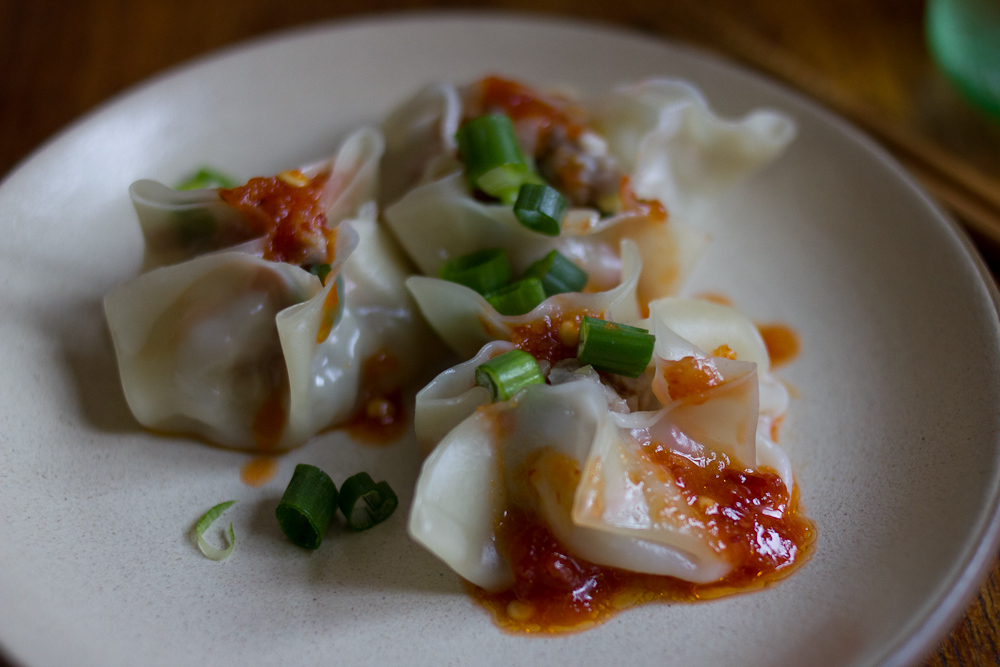
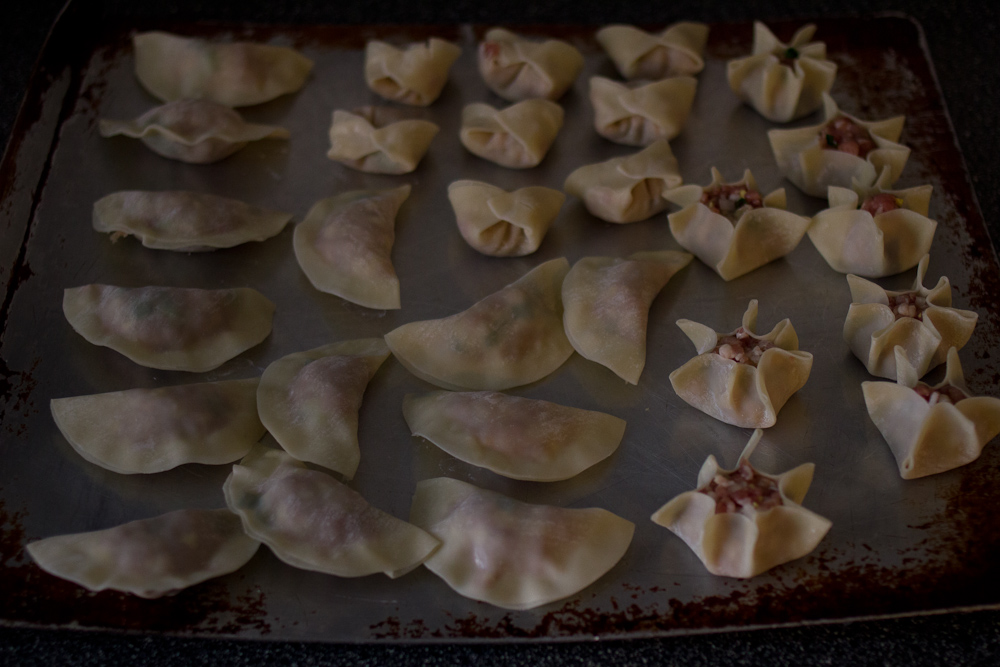
I have a backlog of dumpling recipes to share, but I’m thinking it’s best to start with a classic. Basic pork dumplings. A little garlic, ginger, scallions, and that’s about it. When I was doing research, it seems that many recipes also call for cabbage, sesame oil, onions and pepper, which we added the first time we made these. The second time, we forgot those other ingredients and no one was the wiser. Simple wins.
I like my dumplings with vinegar, a good amount of it. Jordan likes chili oil. We joined forces for this sauce—if joining forces can be described as mixing together two ingredients in a bowl. If you like spicy, make the sauce. If you don’t, mix a little soy sauce and rice vinegar in a dish. Or just eat the dumplings plain. Everyone is free to eat their dumplings however they like, we accept all forms of dumpling eatery.
Dumplings also freeze exceptionally well, which is handy because this recipe makes about fifty. I love dumplings, but I can’t eat fifty in one sitting. Yet. Make sure to take the frozen-factor into account when steaming or pan frying, they’ll take a few extra minutes to cook. We’ve gotten to the point where we’re nervous if there isn’t a bag of dumplings in the freezer. (Trader Joe’s frozen gyoza are also really good, if you’re in the mood to eat dumplings but not to make them yourself). Dumplings are perfect for a quick, weeknight dinner. Steam some rice, sauté some greens, fry up a few dumplings and you’ve got yourself a great meal. We have it at least once a week.
Basic Pork Dumpling with Chili Sauce
1 lb pork shoulder, cut into cubes and ground with a meat grinder (or ground pork, the fattier, the better)
1 tablespoon fresh garlic, diced
1 tablespoon fresh ginger, diced
4 scallions, white and green parts, sliced thinly
2 teaspoons kosher salt
2 teaspoons soy sauce
1 package of dumpling wrappers (about 50 wrappers)
For the Chili Sauce
2 tablespoons sambal oelek chili sauce (find it at any Asian grocery for $1.70, or substitute sriracha)
1 tablespoon rice vinegar
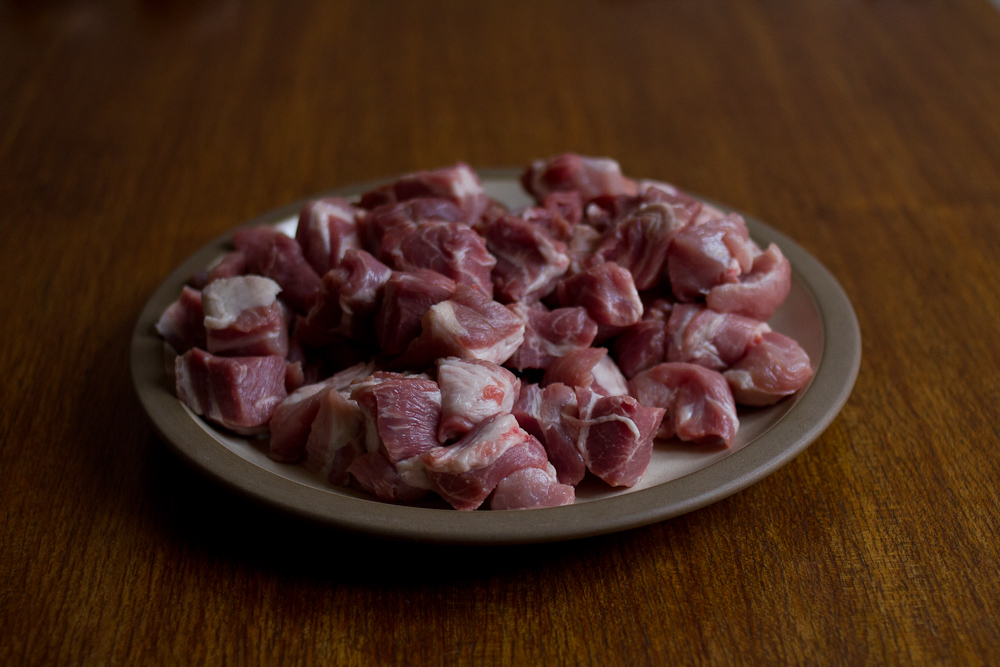
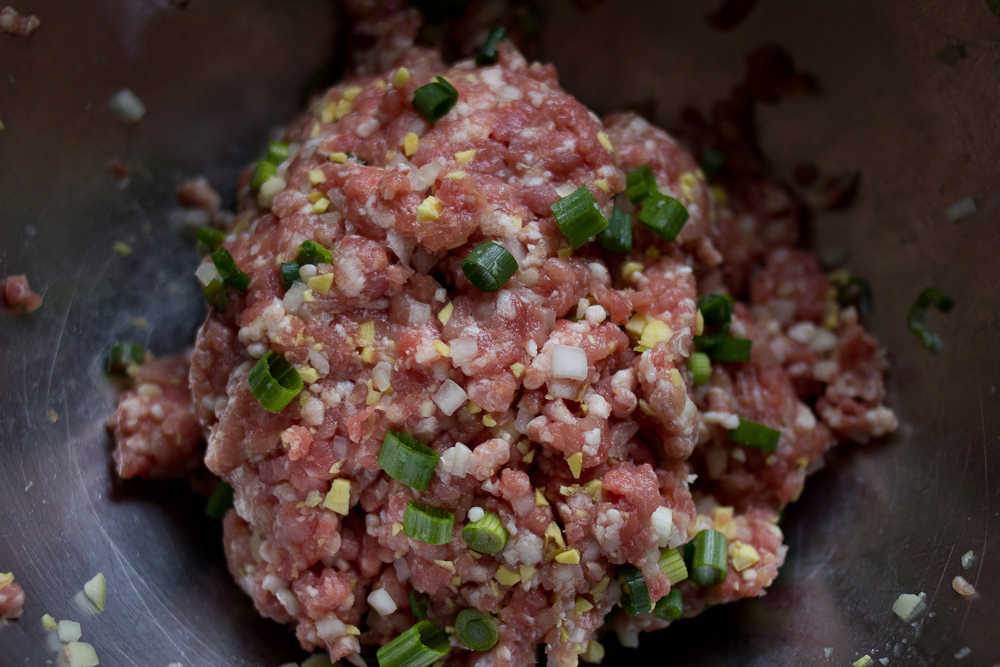
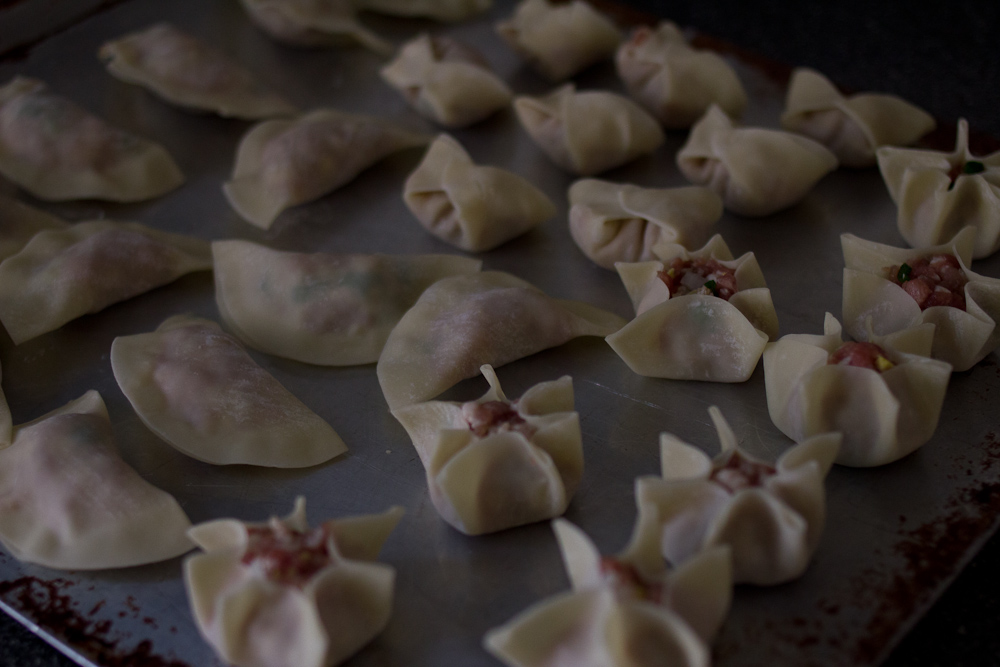
Cut the pork shoulder into 1 inch cubes and sprinkle with salt. Chill in the freezer for 20 minutes, then grind on the fine die with your meat grinder. Or, if you don’t have a husband who loves to grind meat, purchase some ground pork from your butcher. Make sure it isn’t too lean. A little fat means juicy dumplings.
Mix the ground pork, garlic, ginger, scallions and soy sauce together until everything is evenly distributed. Lay out a few rows of dumpling wrappers on a baking sheet or countertop. Put a heaping teaspoon of filling in the center of each wrapper. Using your finger, moisten the edges of the dumpling wrapper. Fold in half and crimp the edges.
To cook, heat a small amount of water in a pot and top with a steamer or colander. Line the steamer with some parchment paper so your dumplings don’t get stuck to the steamer. Plan to cook at least 10 dumplings per person—they go down easy. Steam the dumplings for about 5 minutes, until the internal temperature is 160° F. I recommend using a thermometer to check the temperature until you get your steaming technique down. If you let the dumplings go too long, the pork filling can end up a bit dry and crumbly instead of juicy and succulent. Top with chili sauce and enjoy!
